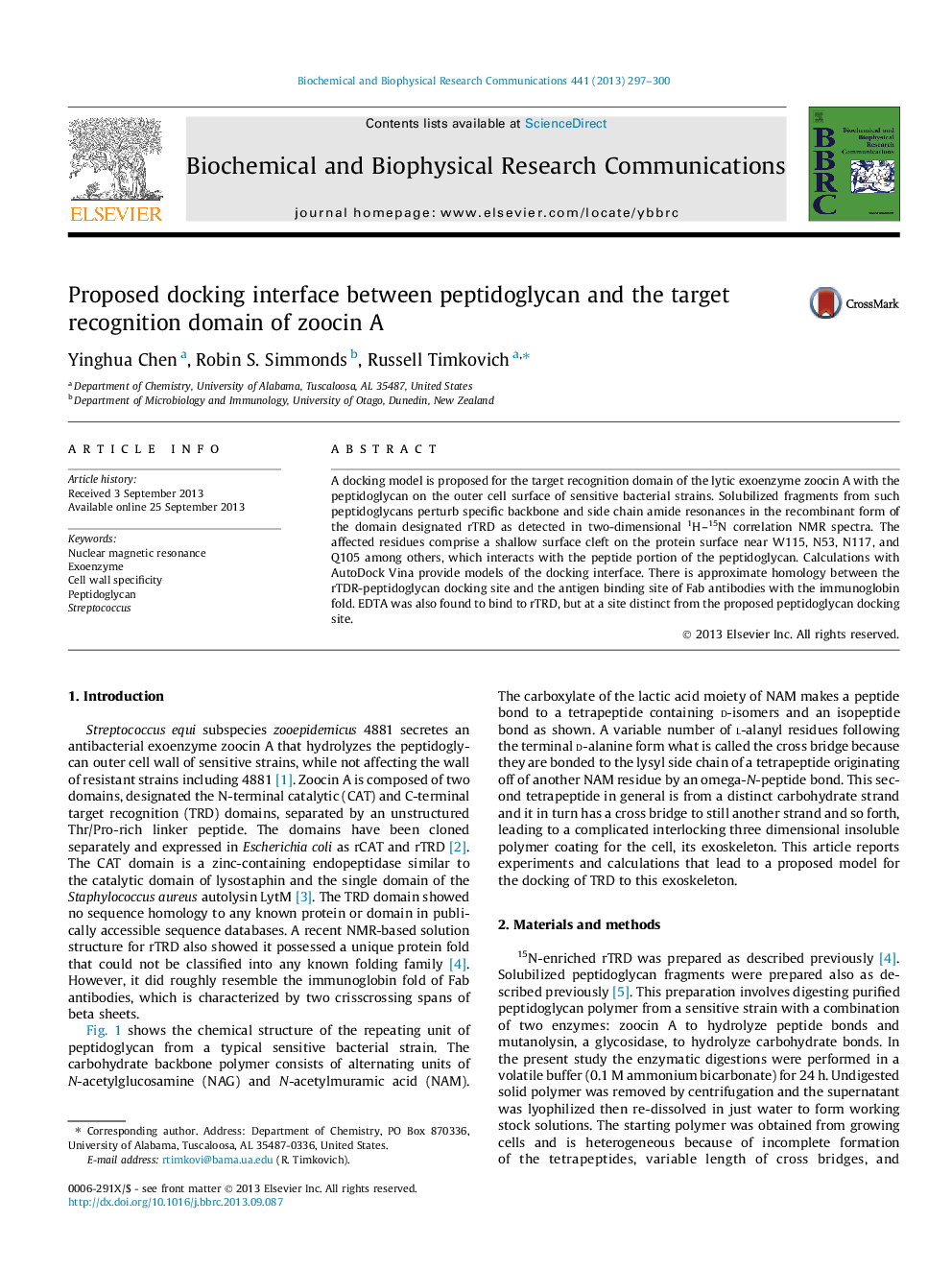| Article ID | Journal | Published Year | Pages | File Type |
|---|---|---|---|---|
| 10757196 | Biochemical and Biophysical Research Communications | 2013 | 4 Pages |
Abstract
A docking model is proposed for the target recognition domain of the lytic exoenzyme zoocin A with the peptidoglycan on the outer cell surface of sensitive bacterial strains. Solubilized fragments from such peptidoglycans perturb specific backbone and side chain amide resonances in the recombinant form of the domain designated rTRD as detected in two-dimensional 1H-15N correlation NMR spectra. The affected residues comprise a shallow surface cleft on the protein surface near W115, N53, N117, and Q105 among others, which interacts with the peptide portion of the peptidoglycan. Calculations with AutoDock Vina provide models of the docking interface. There is approximate homology between the rTDR-peptidoglycan docking site and the antigen binding site of Fab antibodies with the immunoglobin fold. EDTA was also found to bind to rTRD, but at a site distinct from the proposed peptidoglycan docking site.
Related Topics
Life Sciences
Biochemistry, Genetics and Molecular Biology
Biochemistry
Authors
Yinghua Chen, Robin S. Simmonds, Russell Timkovich,
